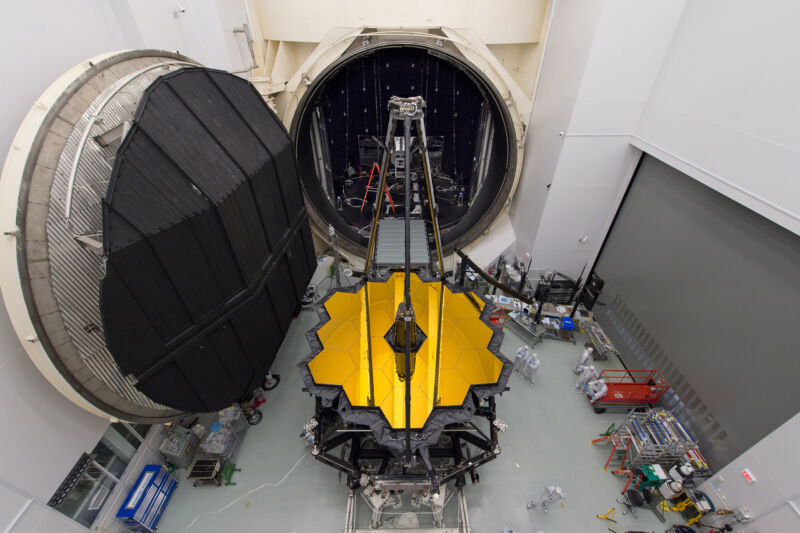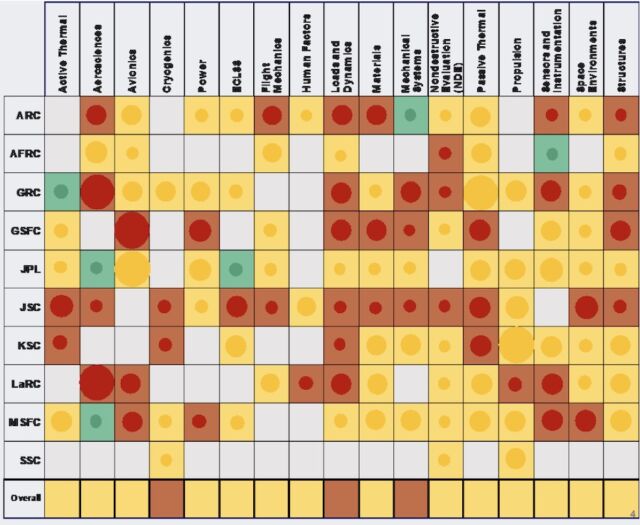
A panel of independent experts reported this week that NASA lacks funding to maintain most of its decades-old facilities, could lose its engineering prowess to the commercial space industry, and has a shortsighted roadmap for technology development.
“NASA’s problem is it always seems to have $3 billion more program than it has of funds,” said Norm Augustine, chair of the National Academies panel chartered to examine the critical facilities, workforce, and technology needed to achieve NASA’s long-term strategic goals and objectives. Augustine said a similar statement could sum up two previous high-level reviews of NASA’s space programs that he chaired in 1990 and 2009. But the report released Tuesday put NASA’s predicament in stark terms.
Grumbling about crumbling infrastructure
Around 83 percent of NASA’s facilities are beyond their design lifetimes, and the agency has a $3.3 billion backlog in maintenance. When you consider NASA’s $250 million estimate for normal year-to-year maintenance, it would take a $600 million uptick in NASA’s annual budget for infrastructure repairs to catch up on the backlog within the next 10 years.
To members of Congress or the White House, backing a new NASA mission to the Moon or a space telescope to probe the deepest reaches of the Universe is often more attractive than investing in facility maintenance. The former initiatives grab headlines and create jobs. Most of NASA’s facilities across the country are rated “marginal to poor” in condition, according to a presentation to the National Academies last year by Erik Weiser, NASA’s director of facilities and real estate.
“In NASA’s case, the not-uncommon tendency in a constrained budget environment to prioritize initiating new missions as opposed to maintaining and upgrading existing support assets has produced an infrastructure that would not be viewed as acceptable under most industrial standards,” the panel wrote in its report. “In fact, during its inspection tours, the committee saw some of the worst facilities many of its members have ever seen.”
“Since the year 2010, the NASA budget for missions has gone up by 8 percent,” Augustine said. “Meanwhile, the budget for mission support has dropped by 33 percent. If you do a little arithmetic, it shows that every dollar of mission support budget today has to support 50 percent more mission activity than was the case in 2010, not that long ago.”
NASA is dealing with these infrastructure shortfalls as the agency pursues the most challenging missions in its 66-year history.
“Viewed in terms of both the architectural complexity and the technical complexity, NASA today—for example, in the Artemis program to land on the Moon a few years from now—is taking on challenges that far surpass anything that was faced in the Apollo program,” Augustine said.

All of NASA’s centers have facilities the agency considers marginal, but Johnson Space Center in Houston has the facilities with the worst average score. Johnson oversees astronaut training and is home to NASA’s Mission Control Center for the International Space Station and future Artemis lunar missions. The Jet Propulsion Laboratory in California, which develops and operates many of NASA’s robotic interplanetary probes, and Stennis Space Center in Mississippi, used for rocket engine testing, are the only centers without a poor infrastructure score.
These ratings cover things like buildings and utilities, not the specific test rigs or instruments inside them. “You can have a world-class microscope and materials lab, but if the building goes down, that microscope is useless to you,” Weiser told the National Academies panel in a meeting last year.
The panel recommended that Congress direct NASA to establish an annually replenished revolving working capital fund to pay for maintenance and infrastructure upgrades. Other government agencies use similar funds for infrastructure support. “This is something that will require federal legislation,” said Jill Dahlburg, a member of the National Academies panel and former superintendent of the space science division at the Naval Research Laboratory.
